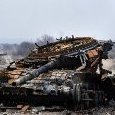Announcements
-
Topics
-
Latest posts...
-
1
Farmer Dies After Falling into Fertiliser Spreader: Nakhon Ratchasima
If he didn't turn-off the machine drive then he got what he deserved. -
2
Thai Govt Cracks Down on Low-Quality Imports and Foreign Nominee Businesses
What a farce. They should instead ban inferiour Thai products including food. What a mess Thailand has become. -
3
Trump statue in Philadelphia commemorates ‘a lifetime of sexual assault’
He's going for the Oompalumpa vote -
1
Thai Manufacturing Slows by 3.5% Due to Challenges in Auto and Construction Sectors
Well, well, well, who wold have thought a rising baht would tank exports further -
175
Do you drink drive?
Yep, probably by one of your mates you got off drink driving. I will have to keep an eye out for them. Next thread you will probably be harping on about how bad corruption is. -
6,281
-
193
Trump’s Puerto Rico fallout is ‘spreading like wildfire’ in Pennsylvania
The dementia dance. He's not used to opening doors himself either. A man of the people.- 1
-

-
2
Boston Dynamics’ Atlas Robot Now Fully Autonomous, Showcasing Next-Level Robotics
Fully autonomous? If that is true, one hopes it and it's co robots will never have access to weapons.
-
-
Popular in The Pub
-
Recently Browsing 0 members
- No registered users viewing this page.
.png.3b3332cc2256ad0edbc2fe9404feeef0.png)







Recommended Posts
Create an account or sign in to comment
You need to be a member in order to leave a comment
Create an account
Sign up for a new account in our community. It's easy!
Register a new accountSign in
Already have an account? Sign in here.
Sign In Now